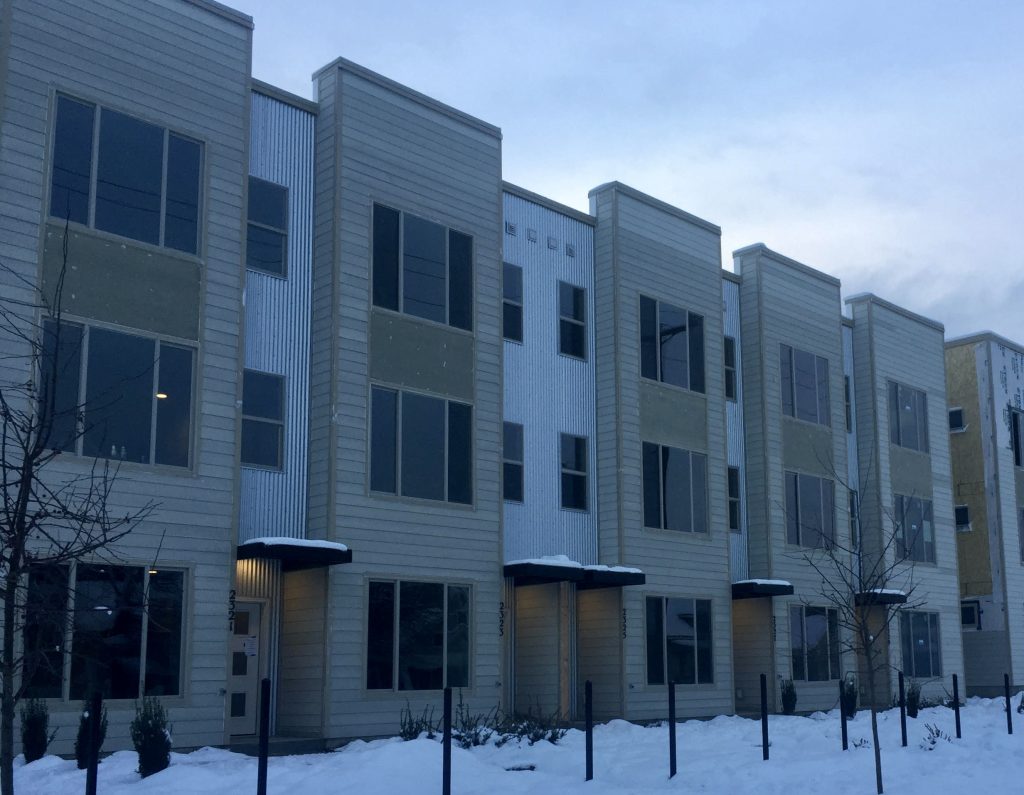For years, West Coast cities have been facing a housing emergency, as chronic under-building of housing met massive demand, spurred by good jobs and the high quality of life that we all love. During the pandemic, this challenge has been particularly acute. And now it’s spilling over into second-tier cities.
Spokane is no stranger to this phenomenon. The city’s Housing Action Plan, which was completed a year ago, found that more than 40% of residents were cost-burdened, with housing prices fast outpacing income growth. More recently, renters have been arriving home to massive rent increases, in some cases doubling their rent. And in May, the median home price hit a record $450,000 — a 20% year-over-year increase, and a stunning 55% increase over the past two years.
These trends are not sustainable, and it’s one of the reasons I and many of my fellow advocates have been calling (in some cases for years or even decades) for massive zoning reform and better renter protections. Evidence is abundant that allowing more of these small-scale housing units can improve a neighborhood’s affordability without displacing longtime residents.

Finally, key Spokane leaders announced their intention to finally do something about it — and do something bold.
City Council President Breean Beggs, Mayor Nadine Woodward, and Councilmember Michael Cathcart proposed a pilot program which would allow, for at least the next year, “missing middle” housing on a broad scale. Mirroring the model championed by Representative Jessica Bateman (Olympia) in the legislature, this package would, among other actions:
- Allow duplexes citywide;
- Allow triplexes and fourplexes within a quarter-mile of all frequent transit lines and a half-mile of all Centers and Corridors zones (essentially Spokane’s version of an urban village);
- Remove unit limits on townhouses;
- Reduce the required lot width to 36 feet in most residential single family (RSF) zones;
- Reduce the minimum lot size for attached homes to 1,280 square feet; and
- Apply design standards similar to the city’s standard design requirements to all of these new unit types.
This has the potential to become the most transformative package of zoning reforms since the city’s “Centers and Corridors” plan concentrated development in an urban village framework. If adopted, it would create options to live in triplexes or fourplexes in parts of almost all neighborhoods across the city. Many of these neighborhoods previously allowed these housing options, or feature these options as “non-conforming,” often low-quality units. This would relegalize them and also go a long way toward improving housing quality.
Even better, City staff and the Plan Commission have been doing the legwork behind the scenes (through a program called “Shaping Spokane Housing”) to improve the residential development code to make these reforms meaningful. These amendments address issues like lot size transitions, dimensional standards, design rules and parking requirements for accessory dwelling units (ADUs) and townhomes, and short plats (lot divisions). Too many cities have neglected these in the weeds issues in their housing work, but many of them were adopted by Council on Monday.
Here’s how this “pilot program” will work.
First, the City Council will adopt an interim zoning ordinance sometime in July to apply these changes for the next year. While passage is not guaranteed, the announcement of this program cut across key divisions on the City Council and elected leadership, and most Councilmembers have expressed a willingness to try allowing additional density in existing neighborhoods.
Second, a one-year window begins in which the new zoning rules would be in place. During this time, developers (or homeowners!) would have an opportunity to “vest” their proposals under this more permissive code. At the same time, City staff and planners will begin community outreach for the adoption of permanent rules along these lines. A public hearing is expected in September. Staff will also collect feedback from developers and community stakeholders on how well the new rules are working, and any potential necessary tweaks.
Finally, by next summer, Spokane City Council is expected to adopt permanent updates to the Comprehensive Plan and development code based on findings from the pilot.
This novel adoption pathway in some way eases the path to long-term allowance for additional missing-middle housing. In particular, it might help assuage the concerns of some neighborhood groups, by proving that the risk of swift, major change is vanishingly slim. But it also raises the stakes on City leadership to get it right. It is critical that staff gathers feedback carefully, and not just from loud voices. It needs to hear from property developers, from renters, from housing advocates, from young people, from businesses which would benefit from more customers, and from homeowners ready to downsize who would gladly take a unit in a fourplex on their property if a developer offered.
In the next year, Spokane has an opportunity to take a massive leap forward on housing choice. It will be up to us to make sure it sticks.
Anthony Gill is an economic development professional and writer at Spokane Rising, an urbanist blog focused on ways to make Spokane a better place to live.



